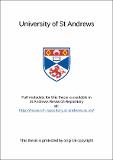Files in this item
Compact femtosecond lasers : routes to improved practicality and adaptability
Item metadata
| dc.contributor.advisor | Sibbett, Wilson | en |
| dc.contributor.advisor | Brown, Tom | en |
| dc.contributor.author | Stormont, Barry | en |
| dc.coverage.spatial | x, 152 p : ill. (some col.) 30 cm. | en |
| dc.date.accessioned | 2021-04-08T08:59:23Z | |
| dc.date.available | 2021-04-08T08:59:23Z | |
| dc.date.issued | 2005 | |
| dc.identifier.uri | https://hdl.handle.net/10023/21915 | |
| dc.description.abstract | In this thesis, a number of practical femtosecond laser systems are described. Through appropriate selection and design of the intracavity optics used in these lasers, increased adaptability is achieved without making any compromise on the robustness of the final laser design. The laser systems developed during the course of this project made use of Ti: sapphire and Cr: LiSAF as gain media and took full advantage of the optical properties of each. The Ti: sapphire gain medium has been used in the demonstration of a low threshold laser system pumped by an inexpensive, compact, green laser. A design was also assessed where a femtosecond pulse train was produced at a multi-gigahertz pulse repetition frequency. This was made possible through the use of specially engineered intracavity mirrors that were designed as part of this work. Cr: LiSAF crystals when optically pumped with inexpensive red laser diodes are usually regarded as low-gain laser materials. As part of the work presented in this thesis a femtosecond laser based on this material was taken to a pulse repetition rate as high as 1GHz. This approaches the fundamental limit set by the optical properties of the material without the need for stabilisation to prevent damage to the optical components. Also, a scheme whereby the centre wavelength of a femtosecond Cr: LiSAF laser can be tuned without the use of intracavity prisms has been described. This scheme permits the oscillating bandwidth to be controlled thereby allowing a degree of control over the intracavity pulse duration. The research presented in this thesis shows that it is possible to design a laser that is a highly versatile source of ultrashort optical pulses. These concepts and configuration options illustrate that femtosecond lasers can be designed to be highly adaptable tools capable of opening up new avenues of research across science and technology. | en |
| dc.language.iso | en | en |
| dc.publisher | University of St Andrews | en |
| dc.subject.lcc | QC689.5L37S8 | |
| dc.subject.lcsh | Laser pulses, Ultrashort | en |
| dc.subject.lcsh | Tunable lasers--Design and construction | en |
| dc.title | Compact femtosecond lasers : routes to improved practicality and adaptability | en |
| dc.type | Thesis | en |
| dc.type.qualificationlevel | Doctoral | en |
| dc.type.qualificationname | PhD Doctor of Philosopy | en |
| dc.publisher.institution | The University of St Andrews | en |
This item appears in the following Collection(s)
Items in the St Andrews Research Repository are protected by copyright, with all rights reserved, unless otherwise indicated.

